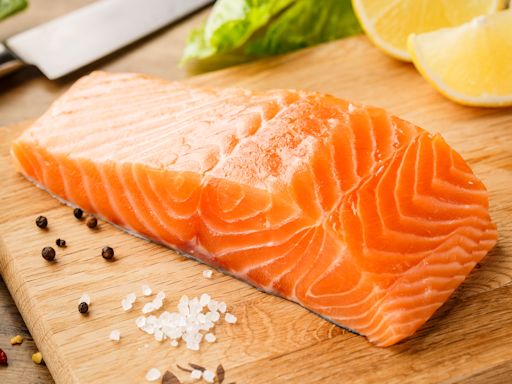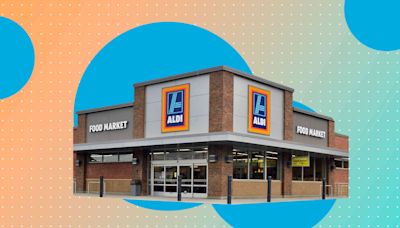Search results
Buy Wild Alaska Salmon Online Direct From the Fisherman. Sustainable Wild Caught Alaska Seafood Shipped to Your Door. Sockeye Salmon, Smoked King Salmon, Salmon Jerky, Nova Lox, King Candy Strips, Alaska Cod, Black Cod and Sushi Grade Tuna.
Wild Alaskan Company offers a monthly seafood membership that delivers 100% wild-caught, never farmed, salmon and other Alaskan seafood to your doorstep. Choose from three curated boxes or customize your own, and enjoy nutrient-rich and flavorful seafood from sustainable fisheries in Alaska and the Pacific Northwest.
Aug 22, 2017 · When you buy fish at the market, you will most likely see some labeled "farm-raised" and some labeled "wild" or "wild-caught." Sure, they're both salmon, but they're very different...
Nov 2, 2023 · Buy boneless, skin-on sockeye salmon fillets or portions from the fisherman himself. Enjoy the high oil content, firm texture and robust flavor of this superfood, blast frozen the same day it is caught.
- (24)
- Wild Alaska Salmon & Seafood Company
- Overview
- Wild-caught salmon vs. farmed salmon
- Differences in nutritional value
- Polyunsaturated fat content
- Contaminants in farmed salmon
- Mercury and other trace metals
- Antibiotics in farmed salmon
- Is wild salmon worth the extra cost?
- The bottom line
- GeneratedCaptionsTabForHeroSec
Not all salmon is created equal. Today, much of the salmon you buy isn’t caught in the wild but bred on fish farms.
Salmon is often prized for its health benefits.
This fish is loaded with omega-3 fatty acids, which have been shown to help with cellular function, nervous system regulation, and inflammatory responses, among other important processes (1).
This article explores the differences between wild and farmed salmon and explains whether one might be better for you than the other.
Wild salmon is caught in natural environments such as oceans, rivers, and lakes.
But half of the salmon sold worldwide comes from fish farms, which use a process known as aquaculture to breed fish for human consumption (2).
According to the Food and Agriculture Organization of the United Nations, by 2030, fish farms will provide close to two-thirds of global food fish consumption (3).
Whereas wild salmon eat other organisms found in their natural environment, farmed salmon are given a processed, high fat, high protein diet that makes them larger (4).
Summary
The production of farmed salmon has increased dramatically. Farmed salmon have a completely different diet and environment than wild salmon.
Farmed salmon are fed processed fish feed, whereas wild salmon eat various invertebrates.
For this reason, the two types of salmon have different nutrient content.
The table below provides a good comparison. Clearly, there are some nutritional differences, most notably the fat content (5, 6).
Interestingly, wild salmon seems to have higher amounts of natural minerals, including calcium and iron.
Summary
Wild salmon often contains more minerals. Farmed salmon can be higher in fat.
The two main polyunsaturated fats are omega-3 and omega-6 fatty acids. These fatty acids play important roles in your body and are called essential fatty acids, or EFAs, because you need them in your diet (7).
However, it’s necessary to strike the right balance.
According to a 2018 published study omega-6’s do not increase inflammation. However, there is also evidence that high intake of omega-6 inhibits the anti-inflammatory effect of omega-3s. The study concluded this is a complicated matter and not properly understood (8).
While farmed salmon contains more fat than wild salmon, a large portion of that fat comes from omega-6 fatty acids (9).
For this reason, the omega-3 to omega 6 ratio is higher in farmed salmon than in wild.
Despite the differences, both farmed and wild salmon have a healthy omega-3 to omega-6 ratio, which should lead to a large improvement in omega-3 intake for most people — and is often recommended for that purpose.
Both farmed and wild fish tend to ingest contaminants from the water they swim in and the food they eat (9).
In a 2017 study, both wild and farmed salmon have been shown to contain PCBs and dioxins, synthetic compounds once used in industrial and commercial processes (11).
Even though there is some evidence that PCBs and dioxins act as carcinogens in humans, the health benefits of both wild and farmed salmon outweigh the risks of the small amounts of synthetic compounds they may contain (11).
And according to the Washington State Department of Health, there are currently strict rules on contaminant levels in feed ingredients for farmed salmon. These changes have lowered contaminant levels in farmed fish in recent years (12).
Summary
Farmed salmon may contain more contaminants than wild salmon, but stricter rules on feed ingredients could be closing the gap. And while both types of salmon may contain contaminants, the health benefits of eating salmon outweigh the small risks.
You’ve probably heard about the connection between mercury (a natural heavy metal that can cause health issues) and fish, but just how dangerous is it to eat salmon if you’re concerned about mercury levels?
According to a 2006 research review, although mercury is found in seafood, larger, longer-living predators (like sharks and swordfish) contain higher concentrations, while salmon has much lower concentrations (13, 14).
In fact, salmon is one of the “best” choices on the FDA’s list of “lower-mercury” seafood options (15).
As for other trace minerals, levels of arsenic may be higher in farmed salmon, but levels of cobalt, copper, and cadmium are higher in wild salmon. However, these metals are found in such low amounts in both varieties of salmon that they’re unlikely to be an issue (9).
If you are pregnant or breastfeeding and are worried about mercury, talk with your doctor or a dietitian about the right amount of seafood for your personal circumstances.
Summary
Due to the high density of fish in aquaculture, farmed fish are generally more susceptible than wild fish to infections and disease. To counter this problem, antibiotics are frequently added to fish feed (16).
Because antibiotic use in aquaculture is not always controlled, unregulated and irresponsible use of antibiotics has been a problem in the aquaculture industry (16).
Antibiotic use is not only an environmental problem but also a health concern for consumers. Ingesting traces of antibiotics over the long term may cause drug resistance, a hypersensitivity to antibiotics, and even the disruption of gut flora (17).
Many of the world’s largest producers of salmon, such as Norway and Canada, are considered to have effective regulatory frameworks. Case in point: From 2003 through 2011, some of Canada’s largest fish farms worked to drastically reduce their antibiotic use (18).
On the other hand, Chile — the world’s second largest producer of farmed salmon — was still experiencing problems due to excessive antibiotic use in 2018 (19).
In 2016, an estimated 530 grams of antibiotics were used for each ton of harvested salmon in Chile. For comparison, 99% of all salmon in Norway used has never been treated with any antibiotics (19, 20).
Farmed salmon has a lot of health benefits. The fish also tend to be larger than wild salmon and occasionally provide more omega-3s.
However, because of environmental and dietary differences, farmed salmon may contain more potentially harmful contaminants than wild salmon.
A big issue with wild salmon tends to be the cost: It can be expensive, and depending on your budget, it may be inconvenient to buy often or at all.
Buying a mix of farmed and wild salmon is a potential option if you’re looking to balance health benefits and cost. But if cost is a concern, buying farmed salmon is still recommended over avoiding salmon completely.
The American Heart Association recommends that most adults eat two servings of fatty fish, such as salmon, per week. This recommendation is due to the high level of omega-3s in fish like salmon and the health benefits that can come from optimal consumption (21).
While farmed salmon and wild-caught salmon are similar in terms of overall health benefits, farmed salmon may have more added antibiotics.
It’s also possible for both farmed and wild caught salmon to contain organic pollutants such as PCBs, as well as mercury.
If you’re trying to minimize your intake of certain contaminants, it may be a good idea to source your salmon from areas that have stricter guidelines or simply eat less of it.
Learn the differences between wild and farmed salmon, including their nutritional value, fat content, contaminants, and antibiotics. Find out which type of salmon is healthier and how to choose the best option for you.
Jun 10, 2013 · Learn how to cook and enjoy wild-caught salmon in various ways, from grilling to poaching to making salads and cakes. Find recipes, tips and ideas for different species and preparations of this delicious fish.
Whether you choose wild salmon, halibut, whole king crab, shrimp, or Chilean sea bass, when you send Vital Choice, you send the best wild seafood Mother Nature offers. Vital Choice is a trusted source for salmon delivery and organic seafood, with some of the world's finest wild-caught seafood delivery and organic salmon, harvested from well ...



